Potential Mechanisms Underlying Intercortical Signal Regulation via Cholinergic Neuromodulators
- PMID: 26558772
- PMCID: PMC4642235
- DOI: 10.1523/JNEUROSCI.0629-15.2015
Potential Mechanisms Underlying Intercortical Signal Regulation via Cholinergic Neuromodulators
Abstract
The dynamical behavior of the cortex is extremely complex, with different areas and even different layers of a cortical column displaying different temporal patterns. A major open question is how the signals from different layers and different brain regions are coordinated in a flexible manner to support function. Here, we considered interactions between primary auditory cortex and adjacent association cortex. Using a biophysically based model, we show how top-down signals in the beta and gamma regimes can interact with a bottom-up gamma rhythm to provide regulation of signals between the cortical areas and among layers. The flow of signals depends on cholinergic modulation: with only glutamatergic drive, we show that top-down gamma rhythms may block sensory signals. In the presence of cholinergic drive, top-down beta rhythms can lift this blockade and allow signals to flow reciprocally between primary sensory and parietal cortex.
Significance statement: Flexible coordination of multiple cortical areas is critical for complex cognitive functions, but how this is accomplished is not understood. Using computational models, we studied the interactions between primary auditory cortex (A1) and association cortex (Par2). Our model is capable of replicating interaction patterns observed in vitro and the simulations predict that the coordination between top-down gamma and beta rhythms is central to the gating process regulating bottom-up sensory signaling projected from A1 to Par2 and that cholinergic modulation allows this coordination to occur.
Keywords: cholinergic modulation; computational model; cortical rhythms; dynamical regulation; intercortical communication.
Copyright © 2015 the authors 0270-6474/15/3515000-15$15.00/0.
Figures


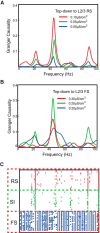
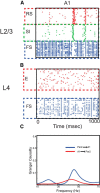
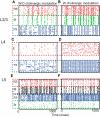
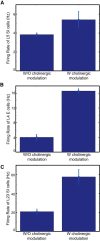
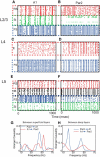


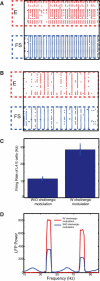
Similar articles
-
Coordination of top-down influence on V1 responses by interneurons and brain rhythms.Biosystems. 2021 Sep;207:104452. doi: 10.1016/j.biosystems.2021.104452. Epub 2021 Jun 15. Biosystems. 2021. PMID: 34139291
-
Disrupted cholinergic modulation can underlie abnormal gamma rhythms in schizophrenia and auditory hallucination.J Comput Neurosci. 2017 Dec;43(3):173-187. doi: 10.1007/s10827-017-0666-4. Epub 2017 Oct 18. J Comput Neurosci. 2017. PMID: 29047010
-
Top-Down Beta Enhances Bottom-Up Gamma.J Neurosci. 2017 Jul 12;37(28):6698-6711. doi: 10.1523/JNEUROSCI.3771-16.2017. Epub 2017 Jun 7. J Neurosci. 2017. PMID: 28592697 Free PMC article.
-
Unraveling the attentional functions of cortical cholinergic inputs: interactions between signal-driven and cognitive modulation of signal detection.Brain Res Brain Res Rev. 2005 Feb;48(1):98-111. doi: 10.1016/j.brainresrev.2004.08.006. Brain Res Brain Res Rev. 2005. PMID: 15708630 Review.
-
Cortical Layer-Dependent Signaling in Cognition: Three Computational Modes of the Canonical Circuit.Annu Rev Neurosci. 2024 Aug;47(1):211-234. doi: 10.1146/annurev-neuro-081623-091311. Annu Rev Neurosci. 2024. PMID: 39115926 Review.
Cited by
-
Biophysical Model: A Promising Method in the Study of the Mechanism of Propofol: A Narrative Review.Comput Intell Neurosci. 2022 May 17;2022:8202869. doi: 10.1155/2022/8202869. eCollection 2022. Comput Intell Neurosci. 2022. PMID: 35619772 Free PMC article. Review.
-
Activation of dominant hemisphere association cortex during naming as a function of cognitive performance in mild traumatic brain injury: Insights into mechanisms of lexical access.Neuroimage Clin. 2017 Jun 23;15:741-752. doi: 10.1016/j.nicl.2017.06.029. eCollection 2017. Neuroimage Clin. 2017. PMID: 28702351 Free PMC article.
-
A Computational Analysis of the Function of Three Inhibitory Cell Types in Contextual Visual Processing.Front Comput Neurosci. 2017 Apr 25;11:28. doi: 10.3389/fncom.2017.00028. eCollection 2017. Front Comput Neurosci. 2017. PMID: 28487644 Free PMC article.
-
Cholinergic Behavior State-Dependent Mechanisms of Neocortical Gain Control: a Neurocomputational Study.Mol Neurobiol. 2018 Jan;55(1):249-257. doi: 10.1007/s12035-017-0737-6. Mol Neurobiol. 2018. PMID: 28965244
-
Chrna2-Martinotti Cells Synchronize Layer 5 Type A Pyramidal Cells via Rebound Excitation.PLoS Biol. 2017 Feb 9;15(2):e2001392. doi: 10.1371/journal.pbio.2001392. eCollection 2017 Feb. PLoS Biol. 2017. PMID: 28182735 Free PMC article.
References
-
- Bastos AM, Vezoli J, Bosman CA, Schoffelen J-M, Oostenveld R, Dowdall JR, … Fries P. Visual areas exert feedforward and feedback influences through distinct frequency channels. Neuron. 2015:390–401. - PubMed
Publication types
MeSH terms
Grants and funding
LinkOut - more resources
Full Text Sources
